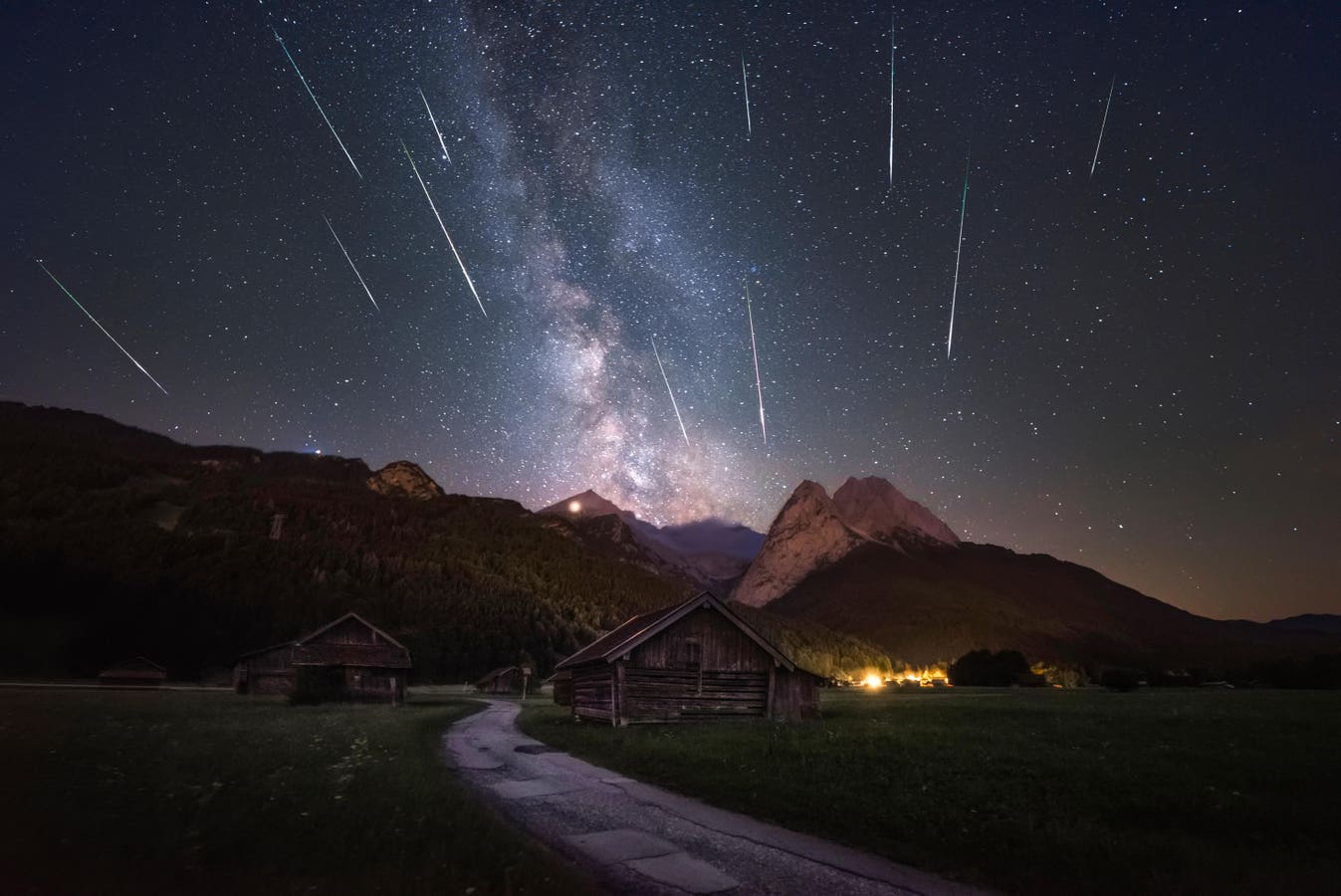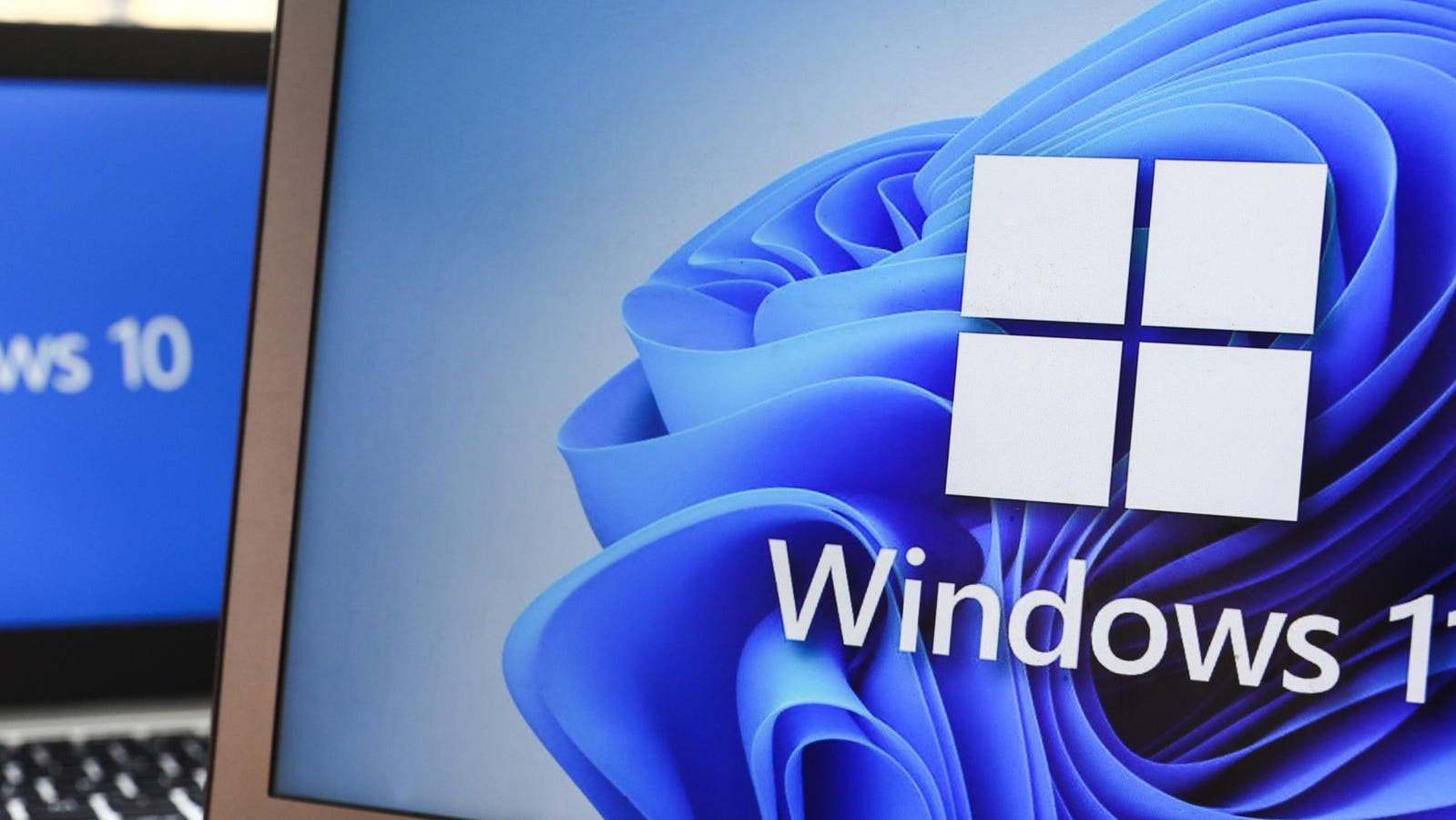2018 Perseids meteor shower with the Milky way, taken in Garmisch-Partenkirchen in the Alps. … More
Two meteor showers peak on the night of July 29 and into the early hours of July 30., making it the best night to watch for shooting stars this summer. The Delta Aquariids and Alpha Capricornids will reach their peak together, with the moon setting early to leave dark skies that could host up to 30 meteors per hour. To add to the spectacle, the annual Perseids meteor shower, which peaks in August, may also offer an extra sprinkle of shooting stars. Here’s how to see shooting stars tonight.
Where And When To Look
You can watch after dark on July 29, once the waxing crescent moon has set, but the best time will likely be between midnight and the early morning hours of July 30.
Meteors can streak across any part of the sky, so don’t fixate on a single spot. However, knowing where they come from is instructive. The Delta Aquariids radiate from near the constellation Aquarius, while the Alpha Capricornids appear to come from the area around Capricornus — both of which are low in the south, as seen from the Northern Hemisphere. In contrast, the Perseids come from the constellation Perseus, which is rising in the northeastern night sky come nightfall.
What You’ll See
Expect to see up to 25 meteors per hour from the Delta Aquariids, known for their faint but steady activity that can continue for a few nights beyond the peak night. The Alpha Capricornids add another 5–10 meteors per hour and are more likely to produce slower, brighter fireballs. The Perseids are more prolific on their peak night, but at this stage, they produce between about five and 10 shooting stars per hour.
Observing Tips
The best way to watch a meteor shower is to get out of the city to the darkest location you can, according to NASA, such as a Dark Sky Place. Allow at least 20-30 minutes for your eyes to adjust, and do not look at your smartphone. Only night vision will allow you to see shooting stars that you would otherwise not notice, which is particularly important for the Delta Aquariids because they tend to be faint. A wide, unobstructed view of the sky is wise, as is having a lawn chair or a blanket to lay down on. Do not try to use a telescope or binoculars, which will hugely restrict your view.
What’s Next In The Night Sky
The full sturgeon moon will turn full on Aug. 9, and just a few days later, early on Aug. 12, there will be a very close conjunction between Venus and Jupiter. That’s the same day the Perseid meteor shower hits its annual peak, but it will be ruined by the lingering sturgeon moon — so make the best of tonight’s moonless night sky, which will make all the difference.
For exact timings, use a sunrise and sunset calculator for where you are, Stellarium Web for a sky chart and Night Sky Tonight: Visible Planets at Your Location for positions and rise/set times for planets.
Wishing you clear skies and wide eyes.









